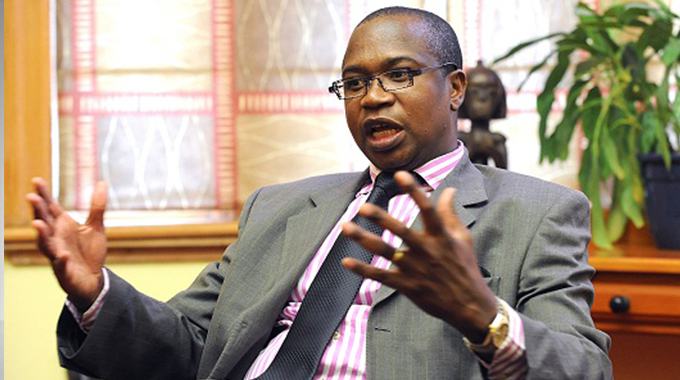
Business Editor
THE appropriate exchange rate between the Zimbabwean dollar and the United States dollar should hover around US$1:ZWL$5,6 based on “founded quantitative estimates”, Finance and Economic Development Minister, Professor Mthuli Ncube, has said.
While acknowledging the prevailing speculation and attendant exchange rate distortions in the market, Prof Ncube, in a public notice on exchange rate determination, suggested that the devaluation of the local currency was being exaggerated by unscrupulous elements.
This saw the exchange rate level spike above US$1:ZWL$20 within a few days last week, compared to a stable ratio of between 1:8.5 to 1:10 on the interbank market, since the re-introduction of the Zimbabwean dollar in June this year.
The Treasury boss said a lower exchange rate was appropriate for Zimbabwe but noted several limitations exist, both conceptual and concerning the availability of data when trying to establish the appropriate exchange rate level for the country.
“This note aims at providing founded quantitative estimates of an appropriate exchange rate between the Zimbabwe dollar and the US dollar.
“It quantifies the ZWL$/US$ exchange rate based on the real exchange rate with South Africa, deriving the nominal exchange rate that would keep real purchasing power of the currencies at 2011 levels, a year of relative macro-economic balance,” said Minister Ncube.

“For August 2019, the most recent period for which the necessary data is available, this suggests a nominal exchange rate of about ZWL$5.6 per US$.
“This is substantially lower than the average interbank rate in August (ZWL$10.0 per US$), as well as the average prevailing parallel market rate (around ZWL$11.2 per US$).”
By this benchmark, Prof Ncube said the currency was, therefore, on the interbank market, undervalued by 26 percent on average since February 2019, peaking at 52 percent in July. On the parallel market the average undervaluation was of 50 percent since February, peaking at 61 percent in June, he explained.
Last Friday, Government had to jump into action to arrest the galloping exchange rates by cracking the whip on individuals and business entities suspected to be behind the speculative behaviour. The move has restored normalcy evidenced by a drastic drop in exchange rates to 1:14 from a peak of 1:20 last Friday.
The trend is expected to continue as monetary authorities tighten screws on errant financial dealers.
Speaking in New York, where he is attending the 74th United Nations General Assembly, President Emmerson Mnangagwa also said the Zim-dollar had performed well in its initial stages but has recently faced wanton assault by some elements in the economy that are manipulating exchange rates for selfish gain, thereby causing a price spiral in goods and services. The wave of price hikes has severely eroded incomes and weakened aggregate demand in the economy as a result of low consumer purchasing power.
Coupled with the general forex supply gap and weak domestic production, exchange rate fluctuations have also weakened market confidence with economists blaming the uncertainty for the spiralling inflation.
